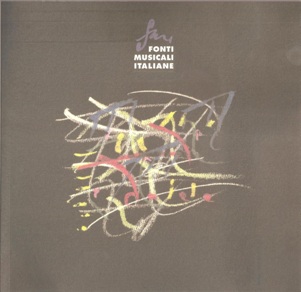L'Agnese di Ferdinando Paër tra Parma e Parigi: fonti e versioni
Abstract
Agnese, rappresentata per la prima volta a Parma nel 1809, fu certamente l'opera di maggior successo di Ferdinando Paër. Dramma semiserio in due atti su libretto di Luigi Buonavoglia, tratto dalla novella inglese di Amalia Opie The Father and the Daughter (1801), Agnese, il cui tema centrale è costituito dalla follia di un padre abbandonato dalla figlia, fu l'unica opera del compositore parmigiano ad essere rappresentata nei maggiori teatri di tutto il mondo (dall'Italia alla Germania, da Londra a Parigi, da Mosca e San Pietroburgo fino a Santiago del Cile e Città del Messico) fin verso la metà degli anni '40 dell'Ottocento. La ricerca musicologica è già a conoscenza del fatto che esistono almeno due versioni dell'opera, ovvero quella originale del 1809 per Parma e quella rielaborata dall'autore nel 1819 per il Théâtre Italien parigino. Ciò che tuttavia ancora non si conosce con precisione è l'importanza e l'entità dei rimaneggiamenti effettuati nel 1819 sulla partitura e sul libretto. Sulla base dell'analisi dettagliata di cinque fonti importanti – la partitura autografa, il libretto della prima parmigiana del 1809, il libretto della prima parigina del 1819, e due copie manoscritte della partitura corrette dallo stesso Paer, una attorno al 1810, l'altra verso il 1826 – quest'articolo riconosce le varianti introdotte nella partitura da Paer stesso e ricostruisce le versioni dell'opera allestite direttamente dall'autore: così si è potuto stabilire che, oltre alle due versioni del 1809 e del 1819, Paër elaborò anche una terza versione di Agnese, presentata nel 1824 sempre al Théâtre Italien parigino. Inoltre, grazie alle varie fonti, abbiamo potuto individuare e riportare alla luce la musica, finora sconosciuta, dei nuovi numeri che Paer aggiunse e integrò per le versioni parigine.
L'articolo costituisce il punto di partenza per la preparazione di un'edizione critica dell'opera contenente tutte le varianti individuate.
Ferdinando Paër's «Agnese» from Parma to Paris: sources and versions
«Agnese», performed for the first time at Parma in 1809, was without doubt Ferdinando Paër's most successful opera. An opera semiseria in two acts to the libretto of Luigi Buonavoglia, based on the short story of the English authoress Amalia Opie The Father and the Daughter (1801), Agnese (whose central theme was the madness of a father abandoned by his daughter), was the only opera of the Parmesan composer to be performed in the leading theatres of the world (from Italy to Germany, from London to Paris, from Moscow and St. Petersburg to Santiago de Chile and Mexico City) right up to the middle of the '40s of the nineteenth century. Musicological research has already discovered the existence of at least two versions of this opera: the original of 1809 for Parma and a version revised by the composer in 1819 for the Théâtre Italien in Paris. What however is not yet known with precision is the importance and the extent of the reworking of the score and the libretto carried out in 1819. On the basis of a detailed analysis of five important sources – the autograph score, the libretto of the Parma première of 1809, the libretto of the Paris performance of 1819, and two manuscript copies of the score as corrected by Paër – one around 1810 and the other towards 1826 – the present article identifies the variations introduced in the score by Paër himself and reconstructs the versions of the opera which were staged directly by the composer; in this way it was possible to establish that, in addition to the two versions of 1809 and 1819, Paër arranged a third version of Agnese which was performed in 1824, always at the Théâtre Italien in Paris. Furthermore, thanks to various sources, we have been able to identify and bring to light the music, hitherto unknown, of the additional numbers which Paër integrated in the Paris version.
The present article represents the starting point for the preparation of a critical edition of the opera which will include all the identified variations.
Pubblicato
Fascicolo
Sezione
Licenza
© CIDIM
Tutti i diritti riservati


